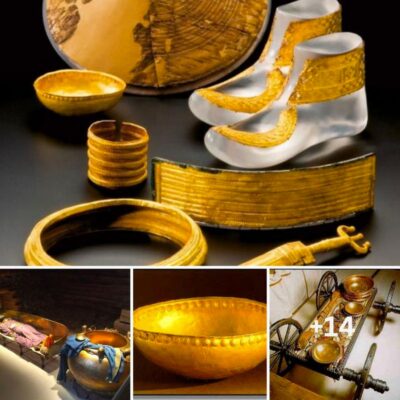Looking for a way to make your lawn or garden more attractive? Along with trees, flowers, and bushes, you can consider planting ornamental grasses. Low-maintenance and versatile, ornamental grass is a great way to add color, movement and seasonal interest to your yard.
1. Little Bluestem

- Botanical name: Schizachyrium scoparium
- Mature height: 3 feet
- Growing conditions: 4-9
- Ideal growing zones: Full sun, well-drained soil
This is a type of prairie grass that can be found throughout the US and in parts of southern Canada and northern Mexico. If you live in the Midwest, chances are good you have seen it at some point. Indeed, both Kansas and Nebraska have it as their official state grass. But it does not grow natively in Nevada, California, or Oregon.
As a perennial, this plant grows in mounds, with the growing season being between May and June. The colors of the blades vary between gray-green and blue-green, thus its name “Little Bluestem.”
In July, it flowers. The flower stalks can rise up to two feet above the grass blades.
During autumn, Little Bluestem loses its blue-green coloration and turns orangey with purple and red hues. You can get a deeper reddish hue if you plant it in sandy soil. Not surprisingly, it resists drought.
2. Black Mondo Grass

- Botanical name: Ophiopogon planiscapus ‘Nigrescens’
- Mature height: 8-12 inches
- Growing conditions: Partial to full sun
- Ideal growing zones: 5-10
Black Mondo Grass is a plant with a dark grayish-green color. It is not technically “black,” but can form such a dark contrast to other plants that it is hard not to think of it that way. Indeed, you can emphasize this contrast in your landscaping by planting brighter green plants around it.
In summer, this grass flowers, producing blossoms that are white or pink bell shapes. These also form a dramatic contrast with the dark green leaves. The flowers in turn produce berries.
As this grass does not grow to be very tall, it works well for lining walkways.
3. Feather Reed Grass

- Botanical name: Calamagrostis ‘Karl Foerster’
- Mature height: 6 feet
- Growing conditions: Full sun, well-drained soil
- Ideal growing zones: 5-9
If the first ornamental grass to spring to mind is Feather Reed Grass, that is probably because few other perennial grasses are as popular as this one. It is actually a hybrid plant, produced by crossing Calamagrostis arundinacea and Calamagrostis epigejos.
Indeed, the hybrid nature of Feather Reed Grass is one of its benefits, because it produces sterile seeds. It also clumps rather than spreads, so it is not aggressive in any way.
The leaves of the grass are green, and during the summer, the plant produces long plumes of flowers that have a soft, feathery texture, thus the name “Feather Reed Grass.” These flowers have a pinkish tint to them.
4. Switch Grass

- Botanical name: Panicum virgatum
- Mature height: 5 feet
- Growing conditions: Partial to full sun, well-drained soil
- Ideal growing zones: 4-9
Next on our list is Switch Grass, also spelled “Switchgrass.” Sometimes, it is also known as tall panic grass, blackbent, Wobsqua grass, wild redtop, tall prairiegrass, Virginia switchgrass, and thatchgrass. This perennial plant can be found throughout the United States and Mexico as well as southern parts of Canada.
Tolerating a wide range of growing conditions (including floods, droughts, and soil in poor condition), this grass is a good choice for beginners. It does spread, but not aggressively, making it easy to control. If you prefer, you can try growing it in a planter (it will need to be a big one).
As a point of interest, switchgrass may be used as a source of energy. Oklahoma State University explains, “After extensive evaluations of many plant species in multiple locations, switchgrass was selected in 1991 by the U.S. Department of Energy as a model herbaceous energy crop for the development of a renewable feedstock source to produce transportation fuel. While switchgrass has been promoted as a ‘savior’ or the ‘answer to expensive, imported fuel,’ much work remains.”
At its tallest, this grass can reach up to 6 feet, so it can actually be an effective privacy screen. Its flowers are purple and feathery, and in the fall, the green grass turns golden. It can make for a dramatic addition to your yard, offering a wild prairie feel you will enjoy throughout the year.
5. Japanese Forest Grass

- Botanical name: Hakonechloa macra ‘Aureola’
- Mature height: 1-2 feet
- Growing conditions: Partial sun, well-drained soil
- Ideal growing zones: 5-9
If you are looking for a short grass that makes a good lining for walkways, one plant to think about is Japanese Forest Grass, also called Hakonechloa or “Hakone.”
This type of bunchgrass does well in partial shade, making it an option worth considering if you are having trouble getting sun-loving grasses to grow in a shady spot in your yard.
The leaves are bright green with a striped pattern, and during the summer, modest rust-colored flowers add visual interest. The leaves remind some people of those on bamboo. Usually, this grass doesn’t exceed a foot or so in height, but sometimes it can get to be up to 2 feet tall.
As far as timing goes, this is a flexible plant, because you can plant it in either the spring or autumn. It is resistant to pests and not prone to disease, requiring little in the way of maintenance throughout the year.
Although Japanese Forest Grass is relatively hardy, it does best in temperate climates and can die in extreme conditions. Also, while you can get away with growing it in a dry area, you’ll need to water it a lot and mulch it appropriately. It will be easiest to grow if you have a cool, shady, humid spot to plant it.
6. Sunset Glow Bamboo

- Botanical name: Fargesia rufa
- Mature height: 6-8 feet
- Growing conditions: Partial to full sun
- Ideal growing zones: 5-9
A lot of people think that bamboo is a tree, which is why we sometimes discuss it in posts where we are talking about trees. But bamboo is classified as a grass, so this is the perfect place to share some bamboo ideas with you for your garden.
One type of bamboo you may want to think about planting is Sunset Glow Bamboo. This type of bamboo clumps rather than spreads. It grows quickly and can get to be quite tall (up to 8 feet), but it is neither aggressive nor invasive.
Another reason to think about growing Sunset Glow Bamboo as an ornamental grass is to take advantage of its hardiness. It can handle pretty much any conditions you can throw at it, whether that is extreme heat and sun or bitter cold. It also can survive a drought. Moreover, it will continue to look great even when it gets really dry.
The stems of this plant are an orangey color, which is why it has the name “Sunset Glow.” But the leaves are green, so the contrast is vivid.
7. Blue Oat Grass

- Botanical name: Helictotrichon sempervirens
- Mature height: 4 feet
- Growing conditions: Full sun, well-drained soil
- Ideal growing zones: 4-9
Not a lot of plants sport a bluish-green hue, but Blue Oat Grass is among the few that do. It forms in clumps and is easy to control. Clusters of beige stalks known as “panicles” emerge during summertime, which in turn produce “spikelets” of flowers with a blue-green color to complement the leaves.
As summer draws to a close, the spikelets lose their blue-green hue and take on a brownish color instead. Their resemblance to oats during the fall is what gives this plant the name “Blue Oat Grass.”
If your winter conditions are not harsh, Blue Oat Grass may retain its blue-green hue year-round, adding some welcome color to your yard.
And did we mention that Blue Oat Grass is pretty easy to grow? It is relatively resistant to disease and pests, and can survive even in low-quality, polluted soil. So, if you live in a city or suburb, it can be a good option.
The only time we would recommend steering clear of Blue Oat Grass is if your climate is especially humid or your soil is particularly damp. Blue Oat Grass can struggle in these types of conditions.
Indeed, because this type of ornamental grass thrives in drier climates and brings a soothing, cool blue tone to landscapes, it is a popular choice in desert regions.
8. Adagio Maiden Grass

- Botanical name: Miscanthus sinensis ‘Adagio’
- Mature height: 5 feet
- Growing conditions: Partial to full sun, tolerates sandy soil
- Ideal growing zones: 5-9
This ornamental grass also sometimes is called “Miscanthus Adagio.” It forms in clumps, is easy to grow and maintain, and tolerates diverse conditions. Oh, and did we mention that deer don’t like eating this grass?
If you want it to function as a privacy screen, it can, because it can reach up to 5 feet in height.
Nevertheless, many people like to trim this ornamental grass regularly, because doing so in the winter can result in the plant producing leaves with an appealing silvery color. But the most dazzling feature of this plant is the yellowish-purplish plumes it produces during the summer.
The beauty of the plant does not fade as the weather gets cold—it simply transforms. The plant loses its green color and turns coppery, but the plumes remain.
9. Black Bamboo

- Botanical name: Phyllostachys nigra
- Mature height: 15-25 feet
- Growing conditions: Partial to full
- Ideal growing zones: 6-10
Just as Sunset Glow Bamboo takes its name from its reddish stalks, Black Bamboo’s name is a reference to its dark green stalks that are nearly black. The leaves are bright green, so the stalks contrast with them beautifully.
This bamboo grows rapidly and requires almost no maintenance, so just about anyone should be able to grow it successfully.
Another reason to think about growing Black Bamboo in your yard is if you are in a region where temperatures dip down way below freezing. This plant can survive even at 0 degrees Fahrenheit. So, if other types of bamboo are not making it through the winter where you live, this type might.
10. Purple Millet

- Botanical name: Pennisetum glaucum
- Mature height: 5 feet
- Growing conditions: Partial to full sun, well-drained soil
- Ideal growing zones: 10-11
Purple Millet is an ornamental grass that is also known as “Purple Majesty” or “Purple Baron.” While most of the grasses we have shared in this list are perennials, this one is an annual (at least, that is the way it is usually grown). It grows rapidly enough, however, that it can get to be up to 5 feet tall. If you live in a dry climate, you should find that this plant weathers droughts admirably.
The appearance of Purple Millet is similar to cattails. Initially, the leaves are green, but during summer, they will shift toward mahogany. The bottlebrush spikes that the plant produces are golden to start, but then turn purple as they produce seeds come autumn.
While you can remove the Purple Millet after it dries up in winter, some people recommend that you don’t. If you have a cold enough climate, Purple Millet may look attractive with ice on it.
11. Gulf Stream Heavenly Bamboo

- Botanical name: Nandina domestica ‘Gulf Stream’
- Mature height: 3-3.5 feet
- Growing conditions: Partial to full
- Ideal growing zones: 6-10
One type of bamboo that can provide interest in your yard throughout the year is Gulf Stream Heavenly Bamboo.
During springtime, many plants are green, but this one will stand out from the others in your yard, as the leaves will be deep red. But as the season progresses into summer, the leaves will turn bluish green. You’ll also be able to delight in white flowers at this time of year.
When summer turns to fall, the leaves will once again be red. In winter, they will not fade, but rather take on orangey hues.
12. Cord Grass

- Botanical name: Spartina pectinata
- Mature height: 7 feet
- Growing conditions: Full sun, moist soil
- Ideal growing zones: 4-7
Spartina pectinata is a type of cord grass (also spelled “cordgrass”) that is popular to grow as an ornamental grass. Specifically, it goes by the name “prairie cordgrass,” and may also be known as “tall marshgrass,” “freshwater cordgrass,” or “sloughgrass.”
You can find it growing throughout much of the US and Canada, as well as parts of Mexico. But if you are in the southeast or southwest USA, you may not be familiar with it.
As you might guess given some of its names, this plant typically is native to wetlands. That means that if you have moist soil, that may be ideal for growing cordgrass. But keep in mind that it does not do well in flood conditions. It can help to combat soil erosion, however.
So, if you have a water feature in your landscape such as a pond, planting cordgrass along the banks may make sense. The grass should thrive there, and might also help to prevent erosion of your soil.
Since cordgrass can grow as tall as 7 feet, it can work well as a privacy screen.
As for its appearance, cord grass features green leaves and sends up tan stalks with feathery ends.
13. Lemon Grass Plant

- Botanical name: Cymbopogon citratus
- Mature height: 3-4 feet
- Growing conditions: Full sun
- Ideal growing zones: 9-11
Do you get a lot of unwanted insects buzzing around in your backyard? If you want a plant that is not only pest-resistant but can actually help deter insects, you should consider planting lemon grass, also spelled “lemongrass.” Some nicknames for this grass include citronella grass, fever grass, silky heads, oily heads, barbed wire grass, Malabar grass, and Cochin grass.
This particular species of lemon grass smells and tastes delicious. As you would expect given its name, the flavour can be described as lemony.
If you grow it in your yard, you may notice a decrease in pesky insects flitting around, and you will enjoy the plant’s invigorating aroma.
You can harvest some of it to use in your recipes. It is rich in vitamins and minerals, and goes well in soups and stir-fry recipes.
With its bright green leaves, it can add some visual appeal to your yard as well. And since it is a perennial, you can enjoy its many benefits over years to come.
14. Fiber Optic Grass

- Botanical name: Isolepis cernua
- Mature height: 6 inches
- Growing conditions: Partial to full sun, moist soil
- Ideal growing zones: 10-11
If you are in search of a real attention-grabber for your yard, the visually striking Isolepis cernua, commonly known as “Fiber Optic Grass,” is worth considering. Some other names it goes by include slender club-rush, low bulrush, and tufted clubrush.
While Fiber Optic Grass grows throughout the world, it is most commonly encountered in wetlands and coastal regions.
Technically, it is an evergreen sedge, not a true grass. Nevertheless, it is often marketed as an ornamental grass since it looks like one.
At some point, you have probably encountered a fiber optic lamp featuring numerous strands that are bright at the tips. This plant looks like a natural version of that. Of course, it doesn’t glow, but the little white flowers at the tips of the green stems give it a similar appearance. The illusion is particularly convincing if you are standing some distance away from the plant.
This effect is prominent during the summer. When autumn comes along, the stems tend to turn brown.
Because this is a wetlands plant, it will not thrive in dry conditions. So, you will have the best luck growing it if you have damp soil. You may need to water it frequently if your soil tends to dry out.
Do you have a pond in your backyard? You can actually grow Fiber Optic Grass directly in the water. Do not fully submerge the plant all at once, or it may die. It needs time to adjust.
One more awesome thing about Fiber Optic Grass is that it is resistant to deer. That means you can enjoy it without having to worry about spraying it or chasing unwanted guests away.
15. Northern Sea Oats

- Botanical name: Chasmanthium latifolium
- Mature height: 3 feet
- Growing conditions: Partial to full sun, well-drained soil
- Ideal growing zones: 5-9
Chasmanthium latifolium, commonly known as Northern Sea Oats, is mostly found in the Midwest. You can find it in Pennsylvania and Michigan as well, but it is threatened in those states. This plant can also be referred to as “inland sea oats,” “woodoats,” or “river oats.”
While the ideal zones for growing Northern Sea Oats are 5-9, you may manage it in 3-4 as well. It does particularly well in loams, acidic sands, and clays.
A number of different types of caterpillars like eating Northern Sea Oats, so if you want to attract butterflies to your yard, planting this ornamental grass is one way to do it.
While a lot of grasses don’t like shade much, Northern Sea Oats do well in it. It is resistant to diseases and pests, and grows neatly in clumps.
Northern Sea Oats feature green leaves and thin, arching stems. Seed heads hang from the stems, starting out as green, but later turning bronze with a purplish tint. The leaves themselves lose their color during the winter.
Even though it might be hard to come by Northern Sea Oats in nature, they are not all that difficult to grow in your own yard with the right conditions.
16. Ravenna Grass

- Botanical name: Saccharum ravennae
- Mature height: 13 feet
- Growing conditions: Full sun, well-drained soil
- Ideal growing zones: 6-9
This plant is also called “elephant grass,” “hardy pampas grass,” “ekra,” or “ikora.” The name “Ravenna Grass” can be spelled as one or two words.
If you need to plant something to stabilize your soil, this grass might be a good choice, since it does a good job keeping soil from eroding.
It also can work well as a privacy screen as it produces very tall stems and large leaves. In fact, the leaves can grow to be up to a meter in length, and the stems may grow up to 13 feet tall. The plumes at the tops of the stems are large and feathery.
There are a couple of precautions to be aware of. For one thing, this plant is toxic to pets. For another, it spreads aggressively, and may overtake other plant beds. So, you may need to take extra pains to control it. Nevertheless, the effort can be worth it to enjoy the dramatic beauty it brings to your terrain.
17. Edible Bamboo Plant

- Botanical name: Dendrocalamus strictus
- Mature height: 10-15 feet
- Growing conditions: Partial to full sun
- Ideal growing zones: 8-11 (or 4-11 if on the patio)
Another tall bamboo plant to consider as a privacy screen is Dendrocalamus strictus, which grows rapidly and can reach up to 15 feet in height. Not only that, but it is easy to grow since it can tolerate a wide range of climate conditions. About the only thing you need to worry about is harsh winds. It is not aggressive, so it won’t take over your lawn.
You can harvest this plant’s shoots to use in your recipes, which is why it is called “Edible Bamboo Plant.”
Indeed, it might work well in some of the same recipes as the Lemon Grass you might also have decided to grow!
18. Golden Bamboo

- Botanical name: Phyllostachys aurea
- Mature height: 30 feet
- Growing conditions: Partial to full sunlight
- Ideal growing zones: 6-10
Golden Bamboo is a plant that can do well through most of the US, and can grow to be even larger than Edible Bamboo Plant or Black Bamboo. It can achieve a maximum height of around 30 feet, and can grow as wide as 20 feet.
Golden Bamboo, like Edible Bamboo, tolerates a wide range of soil types and climates. But it too needs to be protected from harsh winds.
19. Zebra Grass

- Botanical name: Miscanthus sinensis ‘Strictus’
- Mature height: 5 feet
- Growing conditions: Full sun, well-drained soil
- Ideal growing zones: 4-9
This ornamental grass is native to the Far East, and stands out the moment you see it thanks to its leaves, which feature green and tan horizontal stripes. The contrast in colors makes the stripes stand out even if you are at a distance from the plant.
During the summer, Zebra Grass produces white flowers, and in fall, attractive seed head plumes.
The striped effect does not last all year, since the green fades, so during the winter, the leaves are tan. Still, the overall form of the plant is graceful and remains beautiful year-round.
Although it is generally okay to plant Zebra Grass in the spring or autumn, if you live in an area with harsh winters, it is a better idea too plant during the springtime. Otherwise, the plant may struggle to get started.
Be aware that this plant does have a habit of spreading, so you may need to take care that it does not overtake your yard.
20. Mexican Feather Grass

- Botanical name: Nassella tenuissima
- Mature height: 1-2 feet
- Growing conditions: Full sun, well-drained soil
- Ideal growing zones: 6-10
Are you looking for a grass that ripples beautifully as the wind sweeps through it? You may want to consider Mexican Feather Grass. Sometimes it is referred to as “Mexican needle grass,” “pony tails,” “silky thread grass,” or “Texas tussock.”
As the name implies, this plant is native to Mexico, Central and South America, and the southwestern US.
That means it thrives best if you live in the southern part of the US, but it also can do well along the coasts. It can stand up to drought conditions, and won’t be deterred by high heat. So, it is perfect for the desert. Indeed, it loves full sunlight, but if you have some shade, it should still grow well.
This hardy plant may occasionally develop leaf spot or aphids, but otherwise resists most pests and diseases. Deer will not find it appealing, nor will rabbits.
There is one potential drawback of Mexican Feather Grass, however, and that is that it can spread rapidly and aggressively, to the point where it is classified in some regions as invasive.
But on the bright side, you don’t need to water this grass much, so that reduces some of the maintenance involved.
21. Purple Moor Grass

- Botanical name: Molinia caerulea
- Mature height: 5 feet
- Growing conditions: Partial to full sun, moist soil
- Ideal growing zones: 5-9
Molinia caerulea is known as “Purple Moor Grass” or “Tall Purple Moor Grass.” Native to the lowlands of Europe, North Africa, and western Asia, it can do well in a wide range of soil conditions, but it prefers acidic soils. It thrives on moisture, which is why it can often be found in bogs.
The leaves of Purple Moor Grass are not purple, but green. The name refers to the spikelets, which are purple, and top the stems. The stems grow more or less straight upward, rather than arcing.
One nice thing about this grass is that it flowers from July through September, so it can add interest to your yard later in the season as other flowers die.
By fall, the grass turns yellow and starts to collapse, so there is not a lot to look at during the winter. Trimming the plant back in February or March will help it to produce fresh growth for spring.
22. Pink Muhly Grass

- Botanical name: Muhlenbergia capillaris
- Mature height: 3-4 feet
- Growing conditions: Partial to full sun
- Ideal growing zones: 6-9
One of the most distinctive ornamental grasses you will ever encounter is Pink Muhly Grass. Once you have seen it, you cannot mistake it for anything else. There are green leaves on the bottom, and slender stems that sprout out with long, wispy plumes of pink flowers.
Whereas a lot of grasses produce plumes or spikelets that are best described as “purplish” or “pinkish,” these plumes of flowers are very pink. Moreover, they are both dense and airy, forming a kind of “cloud” of blossoms for an ethereal effect.
Another reason Pink Muhly Grass is popular is because its flowers are long-lasting. In fact, they can continue to bring color to your landscape until fall ends.
When winter rolls around, the flowers will dry up. At that point, they will no longer be pink, but they will still be pretty, so there is no reason to cut them back.
You can plant Pink Muhly Grass in spring or autumn, but you should wait until spring if the first frost is less than a month away. Leave a few feet between each of your grasses. If you cluster them too closely together, they could develop tar rot, which is a type of fungus.
As a drought-tolerant plant, this ornamental grass can thrive in dry conditions. Moreover, you don’t need to water it all that much. Soil with a low pH is ideal, and saltiness is not a problem. Humidity, however, can be a problem.
As a low-maintenance grass that creates a vibrant, dramatic effect, Pink Muhly Grass is an excellent choice for beginning gardeners who want to bring a stunning transformation to their lawns.
23. Blue Fescue

- Botanical name: Festuca glauca
- Mature height: 1 foot
- Growing conditions: Partial to full sun, well-drained soil
- Ideal growing zones: 4-8
Are you looking for an evergreen perennial ornamental grass? Blue Fescue is worth thinking about. This plant does not grow to be very tall, but it forms nice, neat clumps with blueish-green blades. The color stands out beautifully in any season. Thriving in dry climates and enduring droughts with ease, it does sometimes struggle with heat.
If it appears to die in hot weather, trim it. As summer comes to an end, you may notice new growth beginning in fall.
Birds enjoy Blue Fescue, but deer do not, so those are two more pluses.
A popular thing to do with Blue Fescue is to plant it in a rock garden. It can tolerate the dry conditions better than a lot of other plants, and the small clumps are easy to place among the rocks for a pleasing aesthetic effect. Moreover, the year-round color can liven up what would otherwise be rather gray landscaping.
24. Multiplex Bamboo

- Botanical name: Bambusa multiplex
- Mature height: 20-30 feet
- Growing conditions: Partial to full sun
- Ideal growing zones: 7-10
Looking for another type of bamboo that can grow really tall to serve as a privacy screen? The fast-growing Multiplex Bamboo is worth thinking about. It can get to be 4-6 feet wide when it matures, and as tall as 30 feet. If you plant more than one close together, you can create a wall out of them.
A combination of green and yellow colors makes this plant appealing to the eye. It is also very hardy and can tolerate temperatures down to 10 degrees Fahrenheit.
Thank you for spending time to see this article of Ideassimple about 24 Super Beautiful Ornamental Grasses For Your Garden. Please give us a like, comment or share if you find the article good and meaningful. Have a good day!











